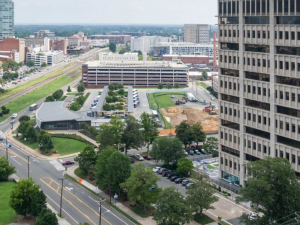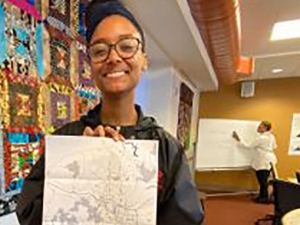New Course! Death, Burial, and Justice (ICS 283), taught by Prof. Adam Rosenblatt

As a professor, I have the power to help shape student experiences. So it’s good to ask: What kinds of doors do I want to open for them? For decades now people have talked about theory versus practice. That’s boring and it’s wrong. We sometimes do a disservice when we present students with a binary — the classroom versus community engagement. I’m more interested in how you make sure both spaces are influenced by each other. How can the classroom and the community work in conversation? -Prof. Adam Rosenblatt
Death, Burial, and Justice is an interdisciplinary course that explores the phenomenon of necroviolence: attacks on the dignity, integrity, and memory of the dead. Cases come from the United States, Latin America, and Canada. Topics include the rights of the dead, cultural attitudes towards the dead, and the “ambiguous loss” experienced by loved ones of the disappeared. We also explore the activism of family members, volunteer cemetery reclamation groups, and forensic scientists who exhume mass graves to identify bodies. Students will interact with guest speakers, spend time in a local African American cemetery with ties to Duke, and do community work and research on behalf of the marginalized dead.
“I’m working on a book about neglected cemeteries. I’m interested in spaces where the dead are abandoned, neglected or forgotten. A lot of invisible structural support goes into cemeteries that are well-maintained. In Virginia, for instance, a lot of federal and state money goes into maintaining Confederate graves. Meanwhile, dotted throughout the country there are black cemeteries that suffer from what I think of as structural neglect. They reveal what my collaborators Brian Palmer and Erin Hollaway Palmer call ‘the afterlife of Jim Crow.’
Spend more than a few hours in a neglected cemetery, though, and you’ll find there’s someone coming there to mow, or to leave flowers. People care about these places — whether it looks that way or not as you gaze over the cemetery.
What excites me about this work is that it’s engaged and participatory.Working with cemeteries is an extremely tactile and accessible way of becoming involved with our public spaces and the stories they tell.
As a professor, I have the power to help shape student experiences. So it’s good to ask: What kinds of doors to I want to open for them? For decades now people have talked about theory versus practice. That’s boring and it’s wrong. We sometimes do a disservice when we present students with a binary — the classroom versus community engagement. I’m more interested in how you make sure both spaces are influenced by each other. How can the classroom and the community work in conversation?
I’ve always taught in interdisciplinary programs, but Duke is a bigger sandbox than I’ve been able to play in before. My students here have a tremendous array of interests, in terms of regions and disciplines.”
Rosenblatt was photographed in Geer Cemetery, a historic African American burial ground just a few miles from campus where Mary Sparkman, a cook for the Duke family, is buried. The long-neglected cemetery is now home to reclamation efforts by local community members, and Rosenblatt plans to get students involved.



